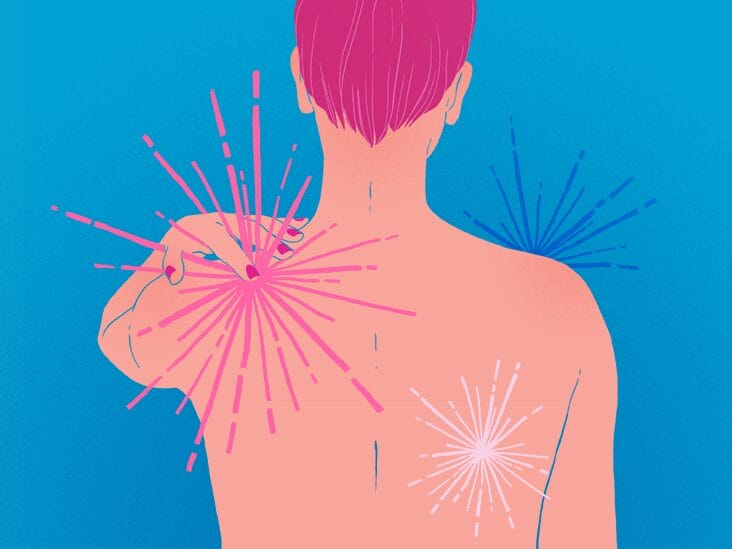
The term “myopathy” describes a class of illnesses that impact the muscles and cause pain, weakness, and other incapacitating symptoms. It can result from a variety of causes, including genetic factors, infections, autoimmune diseases, or certain medications. Even though myopathy may develop gradually, it is crucial to identify its early symptoms and seek treatment as soon as possible to stop additional muscle damage and enhance the quality of life for those who are impacted.
What Is Myopathy?
Any illness or condition affecting the muscles is referred to as myopathy. The hallmark of myopathy is muscle weakness, which can range from mild to severe. It may affect one or multiple muscle groups and can result in difficulties with movements, including walking, lifting objects, or even performing daily tasks such as brushing teeth or climbing stairs. Myopathy can be caused by genetic disorders, inflammatory conditions, infections, or as a side effect of medication, such as statins used to lower cholesterol. If you suspect you may be experiencing symptoms of myopathy, visit https://www.southvalleyneurology.com/services/myopathy to learn more about the condition and seek expert care from the team at South Valley Neurology.
Early Signs Of Myopathy
Recognizing myopathy in its early stages can be challenging because symptoms may initially resemble those of other less serious conditions. However, people can seek medical attention sooner if they are aware of the important symptoms and indicators. Here are some of the early warning signs of myopathy:
1. Muscle Weakness: One of the first and most noticeable symptoms of myopathy is muscle weakness. The muscles closest to the torso, like the thighs, shoulders, and hips, are usually affected. People with myopathy may experience difficulty standing up from a seated position, getting out of bed, or lifting objects that would normally be easy to handle. In some cases, the weakness may be more prominent in the upper or lower limbs.
2. Fatigue: Individuals with myopathy often feel unusually tired or fatigued, even after minimal physical activity. This fatigue can become more pronounced as the condition progresses, making even simple tasks feel exhausting.
3. Muscle Pain And Tenderness: Many people with myopathy experience muscle pain or tenderness, especially after physical exertion. This pain can be constant or may worsen with movement. The muscles may feel sore or stiff, making movement difficult and uncomfortable.
4. Cramping Or Stiffness: Cramping and stiffness are common symptoms associated with myopathy. These issues can make it harder to move muscles freely, and they may occur even without strenuous activity. Stiffness can also lead to difficulty in maintaining normal posture or performing physical tasks.
5. Muscle Atrophy: Over time, untreated myopathy can cause muscle wasting or atrophy. This occurs when muscles begin to shrink and lose mass due to lack of use or damage. In some cases, this leads to a noticeable decrease in muscle bulk or strength, further impacting a person’s ability to perform everyday tasks.
6. Swallowing Or Breathing Difficulties: As the condition progresses, it can affect muscles responsible for swallowing and breathing. This can cause problems swallowing food or beverages, and in extreme situations, breathing difficulties that, if left untreated, could be fatal. In addition to muscle weakness and fatigue, some individuals with myopathy may also experience tingling sensations in their limbs, which can be an early sign of nerve involvement.
Seeking Early Treatment
If you notice any of these early signs of myopathy, it is important to seek medical help as soon as possible. An early diagnosis can lower the risk of additional muscle damage and greatly increase the likelihood of a successful course of treatment.
To identify the reason of the muscle weakness, neurologists and specialists will perform a comprehensive evaluation at a medical facility. This typically includes a combination of physical exams, blood tests, imaging studies, and sometimes muscle biopsies. Identifying the underlying cause of the myopathy is crucial for developing an effective treatment plan.
Treatment options for myopathy vary depending on the specific type and cause of the condition. To lessen inflammation and enhance muscular function in situations of inflammatory myopathy, doctors may administer immunosuppressive medicines or corticosteroids. Treatments to manage the autoimmune disease that is causing the myopathy may assist increase muscle strength. Physical therapy may be suggested in some situations to assist preserve muscle strength and range of motion.
Conclusion
Myopathy can significantly impact a person’s ability to perform daily tasks, but recognizing the early signs and seeking treatment can help mitigate its effects. If you experience any of the symptoms mentioned above, it’s essential to consult with a healthcare provider as soon as possible. Despite the difficulties myopathy presents, early management not only helps stop additional muscle degeneration but also helps people retain a higher quality of life. People with myopathy can create a customized treatment plan that meets their unique needs and aids in their efficient management of the condition by collaborating closely with medical providers.
- Choosing the Best External SSD for Gaming Today - December 5, 2025
- Ultimate Guide to Industrial Robot Welding Systems - November 11, 2025
- How a Marketing Firm for Energy Industry Can Help Promote Clean Energy Solutions - October 18, 2025




